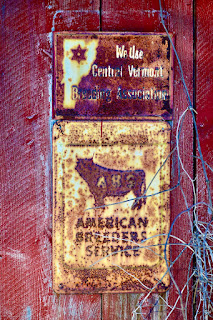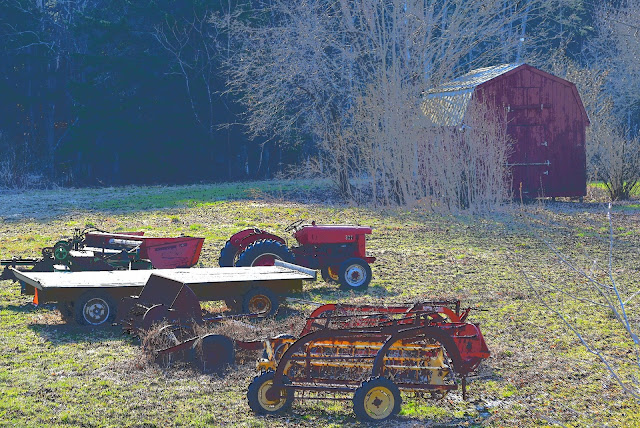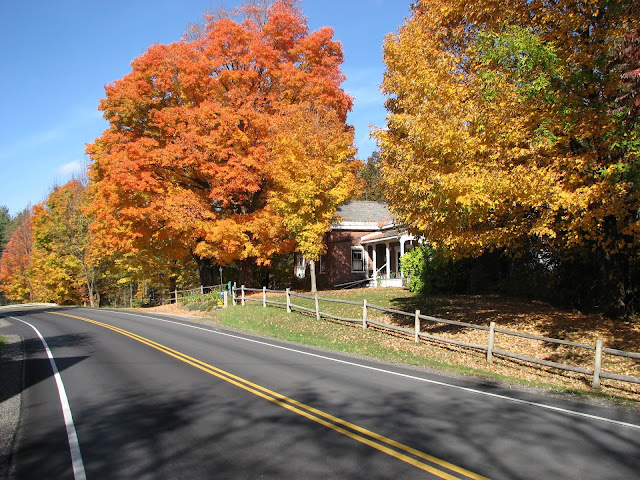399 Brown’s Trace 200 years and 8 families
French-Brown-Johnson-Goodrich-Moutroup-Menard-Lindholm-Hook
By Terry Hook with comments from Bert Lindholm
Edited by Bernie Paquette, Maeve Kim
Photos by Bernie Paquette
Ownership
According to the 1913 History of Jericho, wherein the owner of the farm was listed as Burke Brown, and previous owners as Warren and Russell French. Burke Brown was succeeded in the ownership of the farm by his son Frank, who died in 1945. Burke and Frank were descended from the original Brown family of Jericho. When we had a new water heater installed in the early 1990’s the man who came to install it referred to it as the “Frank Brown house.”
Bert recalls: Don Fay, of the Fay farm, Barber Farm Road, was a nephew of Frank Brown. Don once told me he remembered helping with maple sugaring at the sugar house on our hillside. It had collapsed and was gone when we arrived. Don was proud of the fact that his family had milked a cow, every single night, for over 130 years in their barn. Even after a fire moved the cows up to the Marshall's barn for many months. They kept one cow milking in their barn. That indicates what farming life required in this area during that time.
There were several shorter-term owners (Johnson, Goodrich, Moutroup, Menard) until the Lindholms purchased the property in 1965, which was then purchased by the Hooks in 1990.
Russell French (1805-1882), was the son of Samuel French and Thankful Meigs, who came from Connecticut in 1795 and lived on the Chapin property. There is some interesting confusion here, as Samuel’s father Didymus came to Jericho from Connecticut in 1802, and according to that History, “bought the farm now owned by Burke Brown” and built part of the house. It would seem that Samuel and Thankful came first to Jericho and then convinced his parents Didymus and Jerusha (born in 1741 and 1746, respectively) to move north.
Bert Lindholm has found that the Town Records indicate that the property was actually purchased by Samuel French from Ira Allen in 1795 for six shillings. The exact relationship between Samuel and his father and who farmed the property may not be resolved, but suffice it to say that the French family (who are all interred in the nearby Jericho Center Cemetery) were the first to hold and farm this land.
An interesting aside here is that we have seen mention of the other side of the journey from Guilford, Connecticut. My [Hook] father-in-law’s family has had a farm in Guilford since the 1650s, and in a copy, there is the History of Guilford it is observed that the Frenchs departed those environs for Underhill, Vermont. The name Meigs is common in that area, and there is an island named for them.
House
From the information above it may be inferred that a portion of the house was built around 1802-1805. Of the two portions of the house, it seems clear that the wood-framed piece is older, being constructed with hand-hewn beams. Stylistically the brick portion would appear to date more from the 1820s or so.
The construction techniques, such as the full (albeit stone) basement, sawn boards, and stone lintels would also date from a time when Jericho was no longer a rough frontier settlement.
Many changes have no doubt been made over the years. Some considerable rearrangement of that end of the house was undertaken nearly 100 years ago. At that time I believe that the current staircase was installed. The old staircase is still extant but walled up and floored over and the floor padded with newspapers from 1918. I might guess that the windows were replaced at this time also. I adjudge this only by noting the style; certainly, the current windows do not date from the 19th century.
When I removed a portion of a closet in the dining room I found a lighter with the name “Goodrich” on it – John Goodrich owned the house from 1946 to 1948 and presumably dropped it when building the cabinet.
A number of interior changes were made by the Lindholms when they purchased the property in 1965.
Bert recalls “We made many renovations to the house and the barn. We had workmen everyday for over six months working on changes. Not much had changed in the house during the previous 30-40 years.”
My wife and I met at UVM. We were living in New Jersey with four young children. She was born in Vermont and had an extended family here in Vermont. Her past relatives (Oakes and Blood) at one time ran a mill in Jericho. They are buried at Rt. 15 Pleasant View Cemetery.
We [Lindholms] bought the property in 1965 from Mr. & Mrs. Charlie Menard. They came from a New Jersey farm and had farmed the 85-acre property for the previous 25 years.
As a single-family operation, one-man operation, they kept about 20 to 25 cows in the barn. It had a vacuum system running the milk to the milk house and a manure removal system. Milk was sold in large galvanized cans to the local creamery. The cans sat in a milk house water basin. A hillside gravity spring ran water down thru the house, then across the road to the barn & milk house. The cold water kept the milk fresh. The galvanized pipe rusted out.
We replaced the house water system. Hauled water from the brook for our barn animals. Over time we had two horses, a pony, up to five beef cows, and annual pigs and sheep.
Like many such farms, when the State (circa 1950) required bulk milk tank installations, Menards could not afford the cost. The cows were sold. They were forced to retire.
Charlie had an injured leg and died the year before we purchased it. The Menards split off some 20 - 25 acres on the south side. We bought the remaining 50 or so acres.
From comments, at one point two families lived together in the house. One name was Goodrich - the other [?]. By closing doors and keeping two different living sections to the house; they may have used both of the inside stairways.
In the left bay of the barn, there was a wood pine board silo for corn storage. This was filled through a hole in the roof. Hay was stored on the upper barn floor. Food for the cows was then available down on the lower floor.
In 1965-66-67 we made changes to meet the needs of four growing children and ourselves. We renovated the kitchen, living room, and upstairs to provide modernized facilities.
We feel the present family room and the above bedroom living space where the original house structure. It has a stone wall structure and no basement, just crawl space. See Terry's sketch 1805 versus 1920. When we bought it, this family room area was a two-car garage with a concrete floor, large swinging doors, and a steep drive up from the road. When converting to the family room, we found a full fireplace and brick chimney facing into the garage. We raised the back roof portion to make our bedroom and bath on the second floor.
The larger brick portion of the house was most likely added in the 1820s-1830s when (I believe) there was a brick foundry on Nashville Road. This was when Jericho was thriving with some 13 water-powered mills & factories on the Browns River. Many similar brick structures date from this era.
We did other renovations to the brick area. Upgrading the three bedrooms, installing a large bathroom. Downstairs, removing a bedroom wall making a large living room, installing new wood flooring and a small bath area; along with upgrades to the kitchen. One night, the first fall, we lost all power for over four to six hours at dinner time. The original stove was a combination of electricity and wood for heat. We switched cooking to the wood area and finished dinner by candlelight without any trouble.
With all the major changes we installed a new heating system and revamped the water pipes throughout the house.
From 1965 to 1990 we found our converted home comfortable to our needs and family. Most desirable was sitting on the front porch, a summer evening, watching the western golden sunsets over the New York Mountains. We wish all those who live there have a wonderful time. (Lindholm)
What is now the family room the oldest portion of the house was then a garage. The fireplace in this room was discovered behind the wall when it was removed. The interior siding in this room came from a disused sugar shack on the hillside. What is now the living room were then two rooms, one a bedroom, the other entered from the kitchen. The downstairs bathroom was added, and the large front porch was removed. Considerable rearrangement of the upstairs rooms was undertaken, and the roof raised in the rear to create a larger space.
We have done fewer substantive changes. We installed French doors between the living room and the dining room so that at least we could look at the room even if little or no “living” is done there today. The back porch was largely removed and replaced with a terrace, and the front porch was extended.
In the 19th century, it would have been likely to have heated the house with stoves rather than fireplaces, and a patch on the ceiling in the dining room for a stovepipe may still be seen. Based on the appearance of the radiators I would estimate that central heating was installed sometime in the 1940s.
Barn
Some years ago the barn was on the tour and we learned quite a bit about it. We were told that originally it was a classic English barn with three bays one for hay, one for animals, and one for working; ie, threshing and so on, likely dating from the 1840s.

The horses lived upstairs and I believe that the unusual protrusion near the front was probably added to make room for a carriage or wagon to be parked inside. There is a milk-house with an electrically powered cooling system, but the farm never had a bulk tank, so commercial dairy farming must have ceased in the late 1950s. It seems as if the barn could accommodate no more than 25 or so cows, which would be marginal at best to finance a new tank.
In the period (1925 - 1950) the single-family farm with around 100 acres was a lifestyle here and in Vermont. It provided a modest living selling milk and eggs. Maple syrup spring sales helped pay the town property taxes. (Lindholm)
There is a tunnel beneath the road for cows,
which was installed when Brown’s Trace was paved and realigned in the early 1960s. Although we own both ends of this tunnel, it no longer connects anything that could be used as a pasture on either end.
The small building next to the tractor shed was relocated there from closer to the barn about 10 years ago. The small gambrel-roof barn on the same side of the road was constructed by me in the early ’90s.
Today we own a total of 15 acres with the house and barn, and we keep horses and cut our own hay on this property and others nearby.
Setting
With the open pastures and meadows across the road (if the weather is fine you will see an excellent view of the Adirondacks and Whiteface Mountain) the house still feels and looks like a farm, but it certainly does not look as it did at any other point in its history.
In an aerial photo from the 1950s, there are almost no trees at all. The photo below is from 1962.
The pine forest behind the house was likely sheep pasture and wide open up the where the sugarbush was. The swampy area south of the house was probably just a runnel in the pasture, as the roadway did not form the dam that it does now. The dirt road in front of the house did duty as the barnyard as well, and they probably forked hay up into the upper loft from a wagon on the road.
It is equally difficult to envision what this would have looked like in 1800, but I suppose it was a primeval forest, dark and thick, with a small cabin sitting in a clearing, a far cry from the thickly settled Connecticut shoreline.
Looking back quite a bit farther, geological maps suggest that this elevation was the shoreline of the Champlain Sea. Given the sandy soils on the West side of the road, this seems quite plausible. Now that’s hard to envision!
The old route of the road may be barely discerned under our woodpile, where it was on the same level as the pasture.
In many ways the design of the road was an egregious error; the cut-and-fill, the ditching, and the banking seem more intended to enable a stock car race than to be attuned with a livable and working landscape. While most people merely pass it by, we daily adapt to the problems created by this carelessly conceived slice through the farm.Disclaimer
Finally, let me say that to my knowledge neither the house, nor the barn, nor any portion of the property was on the Underground Railway. If only one-tenth of the houses claimed to have served in this capacity did indeed do so, the organization would have dwarfed the New York Central.

Terry Hook





























The barn is labelled "Birch Hill". What is the origin of that name?
ReplyDeleteThank you, Joan Swan
It's the name of the hill behind the house, as indicated on many maps. Terry Hook
DeleteMany thanks for the information here. One of my granddads was an aquaintance of the Brown family in the 20s...I still have some photos. Thanks again, Jonathan Handley
ReplyDelete